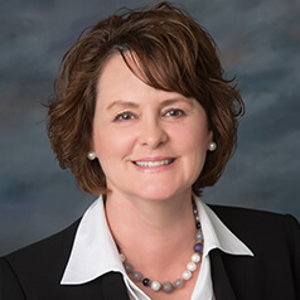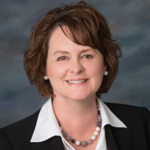
18 Dec Interview with Patricia Goede of XIFIN, Inc.

Patricia Goede is VP Clinical Informatics at XIFIN, Inc., where she brings 22 years’ experience developing biomedical imaging informatics solutions and technology to facilitate multi-modality and multispecialty image-based exchange, collaboration, and management in distributed environments. Goede founded VisualShare and served as CEO until its acquisition by XIFIN in 2015. Previously, Goede was at the University of Utah where she pioneered a number of image, visualization and collaboration tools. She is the founder of the Electronic Medical Education Resource Group (EMERG), and as its director, established the Utah Center of Excellence for Electronic Medical Education. Read her full bio.
Interview with Patricia Goede of XIFIN, Inc.
Q: Patient healthcare data aggregation and analysis is seen as both the panacea for tremendous breakthroughs in precision medicine and as one of its biggest challenges. Are both true and how so?
A: Yes, both are true. Precision medicine in healthcare practices relies on real-time access to patient data to inform clinical decision making. In addition, the analysis of aggregated patient data accelerates the understanding of the correlations between disease heterogeneity, patient subpopulations, and treatment effects.
One of the biggest challenges is the reluctance to share data, perhaps due to security concerns and/or the lack of coordination between different departments within and between institutions so that we have not yet achieved full systems interoperability. Thus, the data continues to be chronically trapped in silos.
Q: What are the biggest hurdles today in getting people to share their health data?
A: In general, most people are willing to share their data when informed about how the data will be used, such as for research purposes.
However, recently there have been some media reports about organizations profiting off the sale of people’s data without the individuals being explicitly told that their data would be sold.
Q: How can they be overcome? What is needed?
A: It’s important that there’s transparency within the informed consent process and that people understand that data sales are one possibility. This may limit the number of people that are willing to share their data, or they may want a piece of the pie, but it’s important for organizations to get informed consent upfront, else risk building a data pool that cannot be used when tighter privacy regulations similar to the EU’s GDPR are implemented here in the U.S.
Q: What has worked? Can you provide some examples that demonstrate that patients and healthy people can successfully share their data where everyone benefits?
A: I think some of the biggest successes have been employees’ voluntary participation in company sponsored wellness programs. Whether it’s biometric data, diagnostic screening results, or data from wearable devices, employees are often incentivized by lower health insurance premiums and may be offered free coaching for making lifestyle changes. Individuals may not even know that they have a health condition or pre-condition until they get their free screening results. Their results may prompt them to seek medical attention before they feel unwell.
Employers benefit from lower health insurance premiums because of their participation and because their employees remain healthier longer. Insurance companies also benefit because their members submit fewer claims. It’s a win, win, win!
For patients, it’s about meeting enrollment criteria for clinical trials and it’s about paying it forward. First of all, the data can be used to match patients to openly enrolling trials, still considered to be the best option for some patients. Secondly, the data collected from today’s patients will greatly benefit future patients, when the data pool has grown sufficiently to allow insights to be recognized from cohorts of patients with similar characteristics. The organization can also benefit from analyzing the rich data pool through development of real world evidence that can be used to establish clinical utility necessary for favorable coverage in addition to quality reporting necessary for maximizing reimbursement.
Q: We have a long way to go. With clinical trials enrolling at 2-3% today and that number falling. What type and level of shift in culture, laws, collection methods, or other areas is going to be needed to accomplish widespread data sharing?
A: That’s a really great question. I think the first thing that needs to happen is that data collection and sharing needs to be made simple. Current record keeping methodologies are perceived as burdensome, adding to workload rather than making workflow more efficient. We have the technology to solve this problem, but we need to get all of the stakeholders in the same room to share ideas so that we are all moving in the same direction. There needs to be better communication, collaboration and sharing between groups.
Another important concern is data privacy and security. Security breaches are not only costly to a health care system in dollars, but also in reputation. Therefore, it’s critical that any data sharing system or systems have all the appropriate security systems in place that protect against data breaches.
Q: How can participants be incentivized to share their health data and other data that researchers need to improve prevention and treatment and develop new therapies and health practices?
A: The simplest solution would be a health rebate or discount of some sort that represents a fair proportion of the value of the data shared.
Q: Will there always be certain communities or populations that will not participate in research because of history or privacy issues?
A: Most likely, yes. Some people do not trust the system and it is unlikely that they will ever participate, but there are many more that will be willing to participate if there’s transparency and informed consent processes in place. There are also some generational differences. Those who’ve grown up in the digital age and who already openly share aspects of their lives are more likely to share their health information then those who preceded them.
Q: What role will personal technology play in scaling health data sharing and collection?
A: Personal technology certainly makes it much more convenient for people to contribute data. Improvements in personal technology to support personal health applications in an automated way will play a significant role in how data is captured, stored and contributed in the future. The simpler the better.
Q: What do you predict the landscape will look like in 10 years in terms of people sharing their health data? What are the determinants to making your vision a reality?
A: The Internet-of-Things has already changed how we interact with everyday activities and objects in our personal lives. It’s not unrealistic to imagine that the same transformation will take place in healthcare. But this can only happen if there is open dialogue, collaboration and trust between all of the healthcare stakeholders – providers, insurers, patients, employers, IT engineers, government regulators, health system administrators, etc.
Q: Is there anything else you would like to share with the PMWC audience?
A: It’s been my honor to participate in this important discussion about the future direction of data sharing in precision medicine. I think that the industry as a whole is well on its way to achieving the goal of the open sharing of health information, but the efforts have been fragmented and siloed. It is extremely important that we collaborate to share best practices. Forums like the PMWC conference allow us to connect with our peers to exchange information and ideas that move us closer to achieving our ultimate shared goal.






